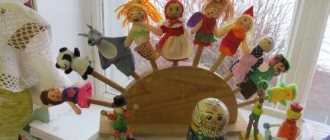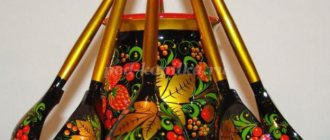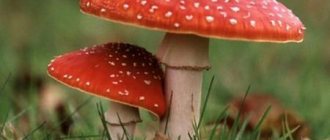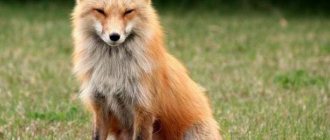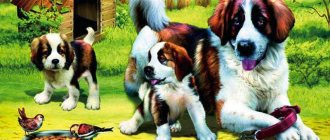Semantic reading: analyzing the fairy tale “Teremok”
Russian folk tales are the very first works that children begin to get acquainted with.
“Teremok” is a fairy tale where the main characters are animals. There are several versions of the tale. This development considers a fairy tale with a happy ending. Together, the heroes build a new spacious house that can accommodate all the animals, including the bear.
I will give a procedure for working with text in a lesson or during extracurricular activities with students. In addition, a comment is given for each task:
Summary
The general composition of the fairy tale “Teremok” remains the same in all versions: the empty space - a jug, a horse's head, a house - is inhabited in turn by various animals until it cannot withstand so many inhabitants and breaks down. The very first version of this tale was written down by A. N. Afanasyev back in 1855-1873. Many Russian writers (E. Charushin, M. Bulatov, V. Suteev, V. Bianchi) slightly changed its main content, and especially the ending, leaving the meaning, meaning and morality unchanged.
Briefly, the outline of the tale can be presented as follows:
The fairy tale teaches children to interact with the world around them. It talks about mutual assistance, about being tolerant of others, no matter how different everyone is from each other. After all, if they wish, everyone can live together and successfully interact with each other. Even the hare and fox, which are hostile in the wild, coexist amicably in Teremok. However, the main idea is how important it is to have a sense of proportion.
The simplicity and simplicity of this work invariably arouses the interest of very young children. It is no coincidence that it is considered one of the most popular in kindergartens. It is also unique in that, depending on the audience, it can be told briefly or filled with different characters and details for older children, as well as change the setting where all the events take place. ’s not for nothing that it is recommended for compulsory reading in grade 1 and is included in the reader’s diary.
This simple tale can be interpreted quite deeply. From the point of view of child psychology, Teremok represents a child’s personality , which consistently masters various skills. With the appearance of each hero, the child moves to the next stage in his development. Over time, the child’s soul and consciousness begin to present a complex structure in which all the characters interact.
Reader's diary on the Russian folk tale “Teremok”
Genre: fairy tale about animals.
Main characters: Mouse, Frog, Bunny, Chanterelle, Top, Bear.
Characteristics of the main characters:
Mouse, Bunny, Frog, Fox, Wolf are friendly animals.
Together they settled in the same house and rebuilt it.
Hardworking and hospitable.
The bear is huge and ridiculous.
I didn’t understand that he would crush the small hut with his weight and height.
Helped the animals build a new house.
Brief summary of the fairy tale “Teremok”
The mouse found a mansion and began to live in it.
She was joined by a frog, a bunny, a fox, and a wolf.
And then a bear came and sat on the roof of the tower.
But the animals built a new little house, better than the previous one.
Fairy tale plan:
6. Bear on the roof.
Children's drawing-illustration
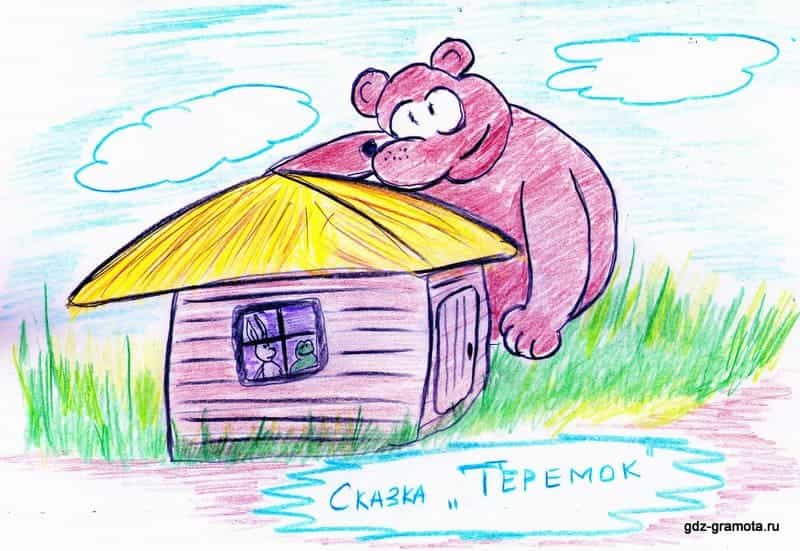
The main idea of the fairy tale "Teremok"
The main idea of the fairy tale is that you need to take care of your home and take care of the comfort in it.
The main idea of the work is that it is better to live in close quarters, and everyone together.
What does a fairy tale teach?
The fairy tale teaches us kindness, openness and responsiveness.
Teaches us to value our home and try to make it better and more comfortable.
Teaches us that we should not despair and be sad, but try to do something new.
A short review of the fairy tale “Teremok” for a reader’s diary
After reading this fairy tale, I thought that doing everything in a company is more interesting and fun than doing it alone.
So the animals had fun together, and when the house broke down, they easily rebuilt a new one.
This is an interesting and instructive tale.
It tells how various animals began to live together.
I liked the mouse because she was the first to find the little house and did not refuse anyone who asked to live with her.
I advise everyone to read this story and think about whether we are good owners.
Do we welcome our guests as we should?
Proverbs for a fairy tale
In crowded but not mad.
The magpie knows where to spend the winter.
The poorer the house, the more crowded it is.
Together it’s cramped, but apart it’s boring.
Where there is friendship and advice, there is light.
Dictionary of unknown words
Terem is a wooden house.
The excerpt from the work that struck me most:
The bear climbed into the tower. He climbed and climbed and climbed and climbed - he just couldn’t get in and said:
“I’d rather live on your roof.”
- Yes, you will crush us.
Source
Analysis of the fairy tale “Teremok”
At the moment of the Bear’s arrival, a complete restructuring of the child’s personality occurs, after which he reaches a new psychologically conscious level of development, having conducted introspection (in this case, reconstruction of the home, the topic of building a new Teremok).
The main idea of the story can be expressed as follows: the existing set of different activities is transformed into a coherent, meaningful activity, set by a single goal. In this case, it is the construction of a new Teremok. All animals together build a new home for themselves, in which they live peacefully and harmoniously.
Source
Main characters
The animals in the fairy tale were not chosen by chance. The mouse has always been a key figure in Russian fairy tales. It’s worth remembering, for example, “Rocktail Chicken” or “Turnip”. First and foremost, she is a seeker. It is no coincidence that she is the one who finds Teremok and is the first to move into it. The next character - a frog - symbolizes speech activity (this characteristic is most important for interaction with the outside world). Then Bunny appears - he is very active , but at the same time he is not without caution.
After this, larger animals (fox, wolf) come. They are predators by nature, but they coexist quite peacefully in the same territory with small animals. The Fox and the Wolf seem to bring the child's development to a new level of maturation , when his personality becomes multifaceted (a little cunning and not as simple-minded as before).
But the main event of the tale is the arrival of the bear. It personifies that very “point of no return” when the common house can no longer accommodate everyone and inevitably breaks down.
